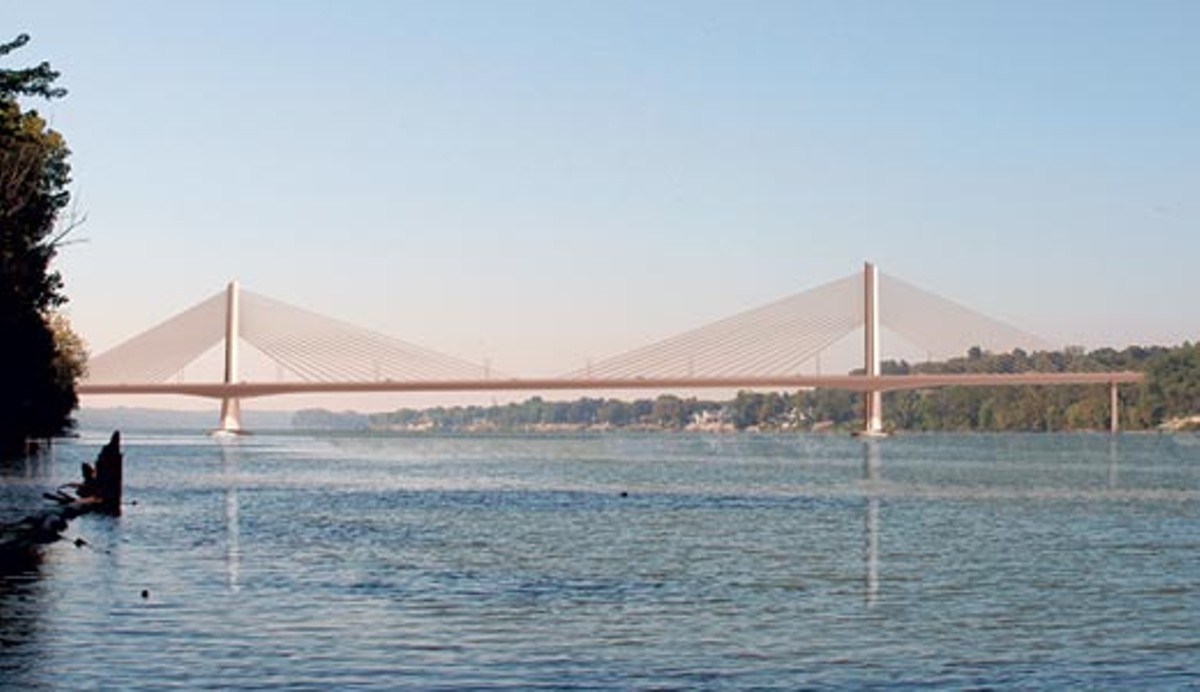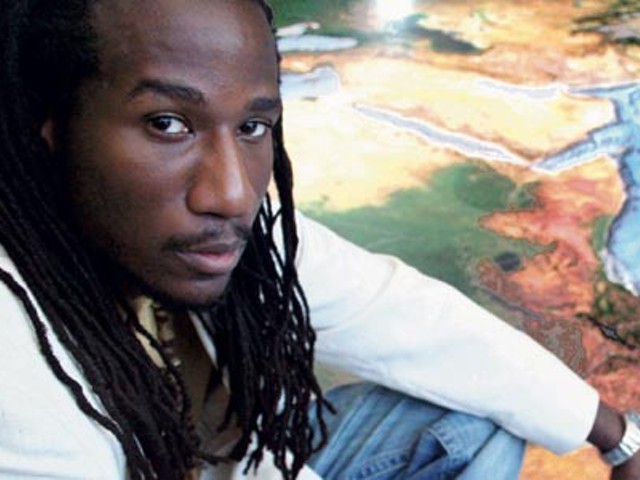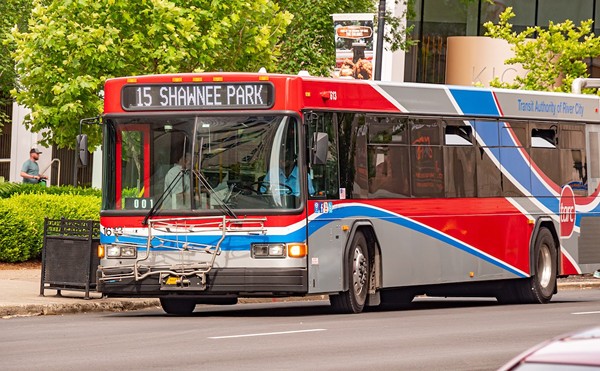On the occasion of its 50th anniversary celebration Sept. 12, River Fields, one of the oldest, largest, most admired and celebrated river conservancies in the United States, was fast becoming the most reviled entity in Kentuckiana.
It was fighting two bridges projects, and incurring ample wrath.
River Road business owners and many commuters already were unhappy with River Fields, whose litigation against the widening of Harrods Creek’s historic one-lane bridge was delaying construction and prolonging the traffic messes related to its closure.
Then-mayoral spokeswoman Kerri Richardson could scarcely contain her delay-fatigue when she told The Courier-Journal, “It’s maddening — maddening.” River Fields attorney Don Cox blamed the city for starting construction “without having the permits they needed.” Richardson countered: “The holdup is not about getting permits, it’s the continuous legal challenges from River Fields. At this point, we’re not sure if they’re trying to save the bridge or save face.”
Then news broke, on the eve of its golden anniversary party, that River Fields and the National Trust for Historic Preservation had filed a federal lawsuit that could long delay — and ultimately jeopardize — the Ohio River Bridges Project (ORBP), an approved plan to build new eastern and downtown spans, and redesign Spaghetti Junction, where Interstates 64, 65 and 71 converge.
The suit was widely perceived as a plot to kill the East End Bridge, but “it’s not just about an eastern bridge,” according to the NTHP statement defending the challenge to the 2003-approved mega-project: “A lot has changed in the past six years, and we think the whole package needs to be re-evaluated. It was cobbled together as a political compromise.”
“No shit,” wrote Steve Magruder on his Louisville History and Issues website. “The ‘compromise’ was to add a downtown bridge that nobody was asking for so as to astronomically increase costs and thereby slow down the construction of the East End Bridge to satisfy River Fields ...” Without belaboring the history, it’s safe to say plans for an East End Bridge and redesign of Spaghetti Junction predated the push for a downtown bridge.
The following week, The Courier-Journal published a letter-bomb that rocked River Fields and readers alike.
Lee Cochran, River Fields’ first executive director and daughter of its founder, blistered the conservancy for favoring a downtown bridge to the exclusion of an East End span: “We might not be staring down the barrel of a costly two-bridge solution if they had not championed the downtown option so fervently and selfishly years ago.” Instead of conservationists, she wrote, “I see them as misguided obstructionists who are unable to see the big picture for the greater good.”
In a lateral letter, East End businessman Charles Buddeke lashed River Fields for using its wealth to dismantle the Bridges Project “even after 450 public meetings, an exhaustive five-year federal environmental study,” etc.
Additional editorial attacks were televised. In two blasts within one week last month, FOX-41 General Manager Bill Lamb castigated River Fields as “a handful of nostalgic purists” who “stand in the way of literally thousands of commuters,” and as a self-important, “tiny minority that believes that with enough money, you really can make time stand still.”
River Fields withdrew its Harrods Creek bridge complaints, and attorney Don Cox’s closing statement aired on FOX-41. If the city merely had repaired the unsafe guardrails of the Harrods Creek Bridge instead of fighting to widen it, he said, “it could have been opened in a matter of days, and the inconvenience to commuters and harm to local businesses could have been avoided.”
Cox, spinning the litigation as a battle wisely chosen, added, “The widened bridge will be an improvement over the original proposal, and the arches and historic homes will be safe.”
River Fields was taking a breathtaking beating — and with relatively scant self-defense in the public arena.
Bob Griffith is a trim, bespectacled gentleman with thinning gray hair whose spirit betrays no hint of ill will.
He shared his thoughts during an hour-long interview in a 16th floor Aegon Tower conference room at Stites & Harbison, a multi-state law firm — the largest in Kentucky. He has represented River Fields for the past decade.
River Fields is well aware of the recent onslaught against it and its longtime director, Meme Sweets Runyon. Griffith believes the attacks are divisive and have no place in the debate because they’re irrelevant to the facts and the law. He said River Fields confines its fights largely to the courts, eschewing venues of public opinion because it insists on being polite. Politeness is a virtue of its code of ethics and members.
Griffith didn’t return fire from coarse critics except to say, “I’m sure it’s a source of great frustration to them.”
Criticism happened before, this isn’t the worst, and it will happen again, Griffith said, recalling fallout from past controversies, including barbs by radio personality Terry Meiners over the organization’s concerns about the Different Strokes Golf center, and calls for Runyon’s resignation. River Fields dismisses acrimony, trusting that fair minds will do likewise. Advocacy, not popularity, is its purpose, and, “We pay a price for that,” Griffith acknowledged.
That price seems unusually high as River Fields battles a bi-state coalition of government, industry and labor groups that support the (two-bridge) Ohio River Bridges Project; a citizen majority that favors an East End bridge (one way or another); and 8664, a group that favors creating a “spectacular waterfront” downtown with the help of an East End Bridge — and without a downtown bridge.
Lee Cochran, a perky, youthful grandmother, said she was “astounded” by the grateful responses to her letter — 30-40 calls from friends, acquaintances and strangers from both sides of the river and many more in person around town. “It was like I had saved a child from a burning building,” she said.
Cochran initially said she didn’t know how deep divisions ran on River Fields’ 21-member board of trustees — wealthy, mostly white, middle-aged and older, East End and well-connected in Louisville’s business and political communities — because she left the organization years ago over various differences of opinion that are becoming clearer now.
But when shown a 2008 River Fields donor list, Cochran was surprised to find several names of people who had praised her letter — including five among major patrons.
Cochran also viewed a new publicity sheet detailing River Fields’ arguments against the bridge and its approaches: sprawl, threats to the groundwater aquifer and harms to historic and natural resources and the habitat of endangered species (two types of bat).
“This is BS,” she said.
“We did the same thing” in the fight to stop the Clark Maritime Center across the river from Glenview, she said. “The sky is falling, the sky is falling, the integrity of the landscape will be irreparably destroyed, the water supply will be polluted … Obviously it was a small special interest group — us, River Fields — we were arguing for all the people who didn’t want to see anything change.
“Of course we lost, as well we should have.”
Cochran believes River Fields has “brought a lot of ill will” but doesn’t think the bridge controversy threatens the existence of the conservancy her father founded.
“I think they need a change in leadership,” she said. “I would rather see them care more about what they can do for the community at large via the river experience than fight for what they purport to be a pristine area — it’s not. It’s not the Red River Gorge; it’s their backyard. I would ask them to look at the front yard by exploring concepts such as 8664. It hasn’t gotten the respect it deserves.”
Without the eastern bridge River Fields opposes, the two-span plan currently in the works obviously couldn’t succeed — and neither could the increasingly popular vision of 8664, a citizen-based group whose mission is to open the riverfront to greater possibilities.
Under 8664, I-64 cross-country traffic would be realigned onto I-265 through Southern Indiana and over a new eastern bridge into Kentucky. A 2-mile section of I-64 (between I-65 and West 15th Street) would be replaced by a surface-level boulevard, which would connect to the downtown street grid. The rest of I-64 inside the I-265 loop would remain as it exists but with a new name (I-364).
The confusion of the written plan is clarified in a brief “overview presentation” video on 8664.org. It clearly illustrates what Cochran calls a “delicious” vision and is a powerfully persuasive marketing tool.
A $60,000 study commissioned by the state found that a similar East End Bridge-only plan yielded the same “system-wide performance” — daily vehicular miles traveled and time spent traveling them — as the approved two-bridge project.
8664.org claims its plan is “a better, faster and cheaper alternative to the $4.1 billion Ohio River Bridges Project,” which would, by widening I-64 at Spaghetti Junction to 23 lanes, add some 75 feet of concrete canopy over Waterfront Park.
Ohio River Bridges Project devotees view 8664 askance. Tim Hagerty, general counsel for the Bridges Coalition, e-mailed LEO that citizens and civic, business and labor groups overwhelmingly support the two-bridge initiative, and that governments in Kentucky and Indiana “have given us the tools to finance all the necessary aspects of the project — not just some halfway solution that looks pretty on posters but does not actually solve our transportation needs.
“The vast majority of our elected leadership — from (U.S. Rep.) John Yarmuth to the large majority of the General Assembly to the large majority of the Metro Council — are totally on board,” he wrote.
Nevertheless, the blogosphere is ablaze with enthusiasm for 8664. In a post titled “Transportation can be counter-intuitive,” Branden Klayko — who runs a neighborhoods and development website called BrokenSidewalk.com — extols the kind of highway reduction 8664 describes: “It’s happening all over the world, gaining popularity, and it works.”
Numerous news reports, studies and examples validate the practice.
Thus, 8664 makes perfect sense to Klayko and his readers, who have decried the riverside interstate as a raised “sewer for cars” and “a grotesque gash in the landscape.” A riverfront pedestrian once described it as “a colossal, concrete middle finger to the city turned sideways.”
Local historians, urban planners and preservationists tend to agree it was a heinous abomination, even when it was built in the 1960s.
If it weren’t for their bridge conflict, it seems unlikely that 8664 and River Fields would be so at odds, give the latter’s cri de coeur, “The river connects us all,” and its key role in the evolution of the Belvedere and Waterfront Park.
River Fields’ cosmopolitan pioneers were inspired by scenic European capitals to enhance the natural beauty of Louisville’s waterfront. Cochran said of her father, “The reason he founded River Fields was that when he went to Paris, he saw the people strolling along the Seine (River). It was an integral part of their urban life.”
Likewise, 8664 co-founders Tyler Allen and J.C. Stites were inspired by cities that had successfully optimized their waterfronts after removing unsightly infrastructure, such as San Francisco and Portland, Ore.
Stites’s father, J.W. Stites Jr., was a River Fields trailblazer who helped founder Archie Cochran draft its articles of incorporation, and he served as River Fields’ president and legal counsel. Stites & Harbison is the namesake of J.C.’s grandfather.
Stites’s plan to world-classify the riverfront seemed like a natural fit for River Fields, so he pitched it to members, including Runyon and Griffith, in 2005; then he resigned himself to irreconcilable differences.
Stites and Lee Cochran are no longer on speaking terms with the conservancy their fathers fueled before green was cool. Stites’s view of River Fields’ motives is prominently displayed in cyberspace: “The board is stacked with landowners who live along River Road, and the organization’s director of 24 years lives within half a mile of the alignment of the East End Bridge.”
NIMBY attacks are commonplace in this debate. Griffith said calling out Runyon for where she lives is “unfair.”
However, Cochran said where River Fields’ players live is fair game because she believes it’s the only credible explanation for their opposition.
Publicity-wise, River Fields has been consistent — if coy — in its opposition. During its struggle against the approval of the Ohio River Bridges Project, the 2001 edition of “The Encyclopedia of Louisville” was published bearing this statement by Runyon: “River Fields has questioned the construction of an East End Bridge across the Ohio River and has supported the building of a new downtown bridge to ease traffic congestion.”
River Fields’ position today is posted on its website: “That the downtown project ... be funded and sequenced for construction first,” and “that the only way to fix the traffic and safety problems at Spaghetti Junction is to build a new interchange tied into a new downtown bridge,” and “that no right-of-way acquisition be made until a specific, realistic funding plan is both publicly issued and subjected to a public dialogue on what it means in practical terms to the entire community.”
What it means is tolling.
Tolling is a foregone conclusion because competition for limited federal road-fund dollars is fierce, and substantial federal funding for such yet-to-commence domestic projects is an increasingly rare occasion. As State Sen. Tim Shaughnessy, D-Louisville, has said, “For the foreseeable future, the only free bridge financed by an American government is gonna be constructed in Iraq or Afghanistan.”
The tolling questions include how much, where and for how long, and the backlash has barely begun.
It spilled across the state Senate floor Feb. 4 of last year, when Shaughnessy scorned an act creating public infrastructure authorities to finance road projects. “Under Senate Bill 7,” Shaughnessy said, “tolls could be implemented solely on the vote of the authority.” He offered an amendment limiting tolling to new construction because, after ominous news reports, he got “bombarded” by “constituents thinking that, under this legislation, we’re going to put tolls on the Kennedy and Sherman Minton Bridges … Tolls go on new construction; taxes go on existing bridges,” he thundered.
That bill died in the 2008 regular session, but the legislature enacted a similar measure during the special session in late June. House Bill 3 empowers a bi-state authority to set tolls. Unlike previous incarnations of the bill, the authority’s financial plan does not require the blessing of the General Assembly.
A bill-signing ceremony in mid-July revealed unbridled political fervor and momentum. Kentucky Gov. Steve Beshear said, “The Ohio River Bridges Project can and will become a reality.” Indiana Gov. Mitch Daniels said, “Every day without those bridges is a day of lost opportunity.” Mayor Jerry Abramson said, “Sign the deal and get this thing started.” Joe Reagan, president of Greater Louisville Inc., the Metro chamber of commerce, said, “This is about prosperity, and it’s about economic growth, and it’s about community prosperity in the future of this region.”
Those statements parallel pronouncements in Frankfort a year and a half ago, as reported by Kentuckians for Better Transportation. House Speaker Pro Tem Larry Clark said, “If it takes tolls, I’m for tolls … The bridges are essential for the operation of Ford, UPS and other companies that require just-in-time delivery.” Rep. Bob DeWeese, whose district includes the site of the eastern bridge, said not building both bridges “is not an option.”
River Fields cites a consultant’s study that found with an eastern bridge, “almost 11,000 permanent jobs are projected to move from Kentucky to Indiana” due to farmland development, “taking about $343 million in salaries” and costing Kentucky some $26 million a year in lost tax revenue — and “not one new permanent job will be created.”
Despite delays due to lack of funds, ballooning cost estimates and a forbidding financial outlook, the two-bridge project lately has been on a fast track, and a local effort to slow it pending public comment failed.
A week after the ceremonial cheerleading, Metro Council members Tina Ward-Pugh, D-9, and Tom Owen, D-8, Louisville’s elder historian, co-sponsored a measure requesting public hearings in each district. Instead of considering it, the council voted to permit Beshear and Abramson to appoint seven Kentuckians to the bi-state authority, which they did in late October. Its members, pending Senate approval, will include Buddeke, Reagan and former Kentucky Transportation Cabinet Secretary Joe Prather.
Ward-Pugh, who questions the necessity for a new downtown bridge and the feasibility of financing the $4.1 billion ORBP, characterized the meeting as deeply disappointing and disfranchising. She vowed to hold public forums as events warrant.
Here are five assertions of the unconsidered resolution:
WHEREAS, ... it might be necessary to toll existing bridges as well as new bridges at a rate of $3 per crossing ...
WHEREAS, tolls will have a detrimental effect on “cross river mobility,” the stated purpose and need of the ORBP ...
WHEREAS, the ORBP will define the character of our city for generations ...
WHEREAS, the ORBP’s Environmental Impact Statement forecasts that the East End Bridge will provide for better “cross river mobility” than the more expensive downtown bridge ...
WHEREAS, ... the Kennedy Interchange would literally encroach on and likely destroy portions of historic Butchertown and Clifton neighborhoods ...
The resolution also cites recent studies showing traffic volume declines on the Kennedy Bridge and in Spaghetti Junction — and less congestion citywide.
Griffith, the River Fields attorney, paints the ORBP’s financial picture bleakly. He says federal law, which takes precedence over state law, precludes the option of tolling I-64’s Sherman Minton Bridge. Spaghetti Junction (the Kennedy interchange) could be tolled legally, though not easily or cheaply, he said.
And it gets worse: Griffith’s consultants tell him that by the time the massive project, one of the largest in the country, could advance in earnest, its cost would double to more than $8 billion.
He voiced doubts about the project’s financial feasibility in 2003, when it was approved at an estimated cost of $2.5 billion, but its promoters “patted me on the head,” he said.
Griffith believes an eastern bridge is unworkable even as a stand-alone project because commuters, he said, would opt to cross the river downtown for free rather than pay a $3 toll in the east.
In short, he doesn’t view it as an infrastructural inevitability. (It should be noted that during a freewheeling hour-long interview, Griffith made no mention of River Fields’ environmental or historic preservation grievances.)
The current plan calls for the eastern span to be completed first, before work begins on a new bridge immediately east of the Kennedy.
While the debate percolates, the price tags rise. Prather said last year that the costs of construction materials had swelled 40 percent in three years.
The urgency is not lost on the Bridges Coalition, an affiliated cheerleader group whose executive director, Kay Stewart, wrote in an e-mail: “There are a lot of financing options, and the timing is now ideal because construction costs are relatively low. Our focus now is on getting the entire project built as quickly as possible to create jobs and save on construction costs.”
The projected cost of a proposed 2,000-foot tunnel under a historic estate in the eastern bridge approach has nearly tripled — from $96.5 million in 2003 to $261 million. Reports in September that project managers were reconsidering the tunnel sparked speculation of a lawsuit, design changes and lengthy delays.
The tunnel remains in the plan.
“I’m hearing, with some consistency, that it’s not financially feasible — that no realistic funding plan would be palatable to the public,” I wrote in an e-mail to Bridges Coalition attorney Tim Hagerty.
“You must be talking to one of the two very vocal but very small groups who have been fighting unsuccessfully for years to stop the most important economic and infrastructure investment in this community in our lifetimes,” he replied.
Meanwhile, pre-construction plans are proceeding. Waterfront Development Corporation President David Karem cited “good progress” in working with engineers to mitigate the project’s impact on Waterfront Park by reducing the number of lanes and support piers, and elevating construction even higher to enhance “visual linkage to the river.” He said the WDC doesn’t take a position in the bridges controversy “because of the diversity of our board members” and its “diversity of opinion.”
Some rights-of-way have been acquired, according to Chuck Wolfe of the Kentucky Transportation Cabinet. “Not many, but some,” he said.
If River Fields’ suit succeeds, citizens and groups with and without lawyers would get a chance to reshape the 2003 Record of Decision, the project’s detailed master plan, within the range of review. Regardless, tolling likely would trigger a review of the project’s Environmental Impact Statement, with a similar opportunity for public participation.
“The longer the project is delayed, the more people realize that the downtown bridge was simply a ploy by River Fields to stop all progress,” 8664’s Stites said. “Momentum for the East End Bridge continues to build.”
And so does the possibility that two bridges is one too many.
But downsizing, Hagerty wrote, “would be a deal-breaker because it would not provide a solution to our clearly identified transportation needs. Indeed, it would be a foolish use of public monies to build only part of the solution — like giving someone a heart transplant but then not connecting it to all of the essential arteries.”
Moreover, all indications are that Indiana, Kentucky’s partner in the project, wouldn’t support a downtown-only option. And either state legislature could kill the project at will. Its 19-year construction phase has yet to begin.
Bi-state conflicts delayed and nearly killed a plan to build a bridge over the Mississippi River between St. Louis, Mo., and East St. Louis, Ill. For years, the states clashed over the scale, cost and financing of the $1.6 billion project.
In 2005, they were deadlocked; Missouri favored a $2 toll, which Illinois vehemently opposed. After the bridge was redesigned from eight to four lanes and the cost was cut to $640 million with a federal commitment of $280 million, governors finally signed a deal devoid of tolling. Construction began last May, after 15 years of planning and rancor.
Meanwhile, the battle between River Fields and 8664 pits conservative against progressive media strategy. True to the old-versus-new character of their conflict, River Fields’ patrician politeness clashes with the populist pluckiness of 8664, whose principals challenge River Fields at every turn.
River Fields claims a dues-paying membership of 2,100 (in 104 ZIP codes), while 8664 boasts a growing base of more than 11,000 supporters.
Given the passion of his push, faith in his vision and strong opposition, it’s easy to understand Stites’s frustration that River Fields is so deeply rooted in Metro’s corporate and political power base (one look at the donor list confirms this). That includes Yarmuth, Abramson, The Courier-Journal, Greater Louisville Inc., the Downtown Development Corporation, and the Bridges Coalition, among others.
“But the most troubling issue is that River Fields’ dishonest and destructive strategy has had the effect of making everyone feel powerless … I believe the East End Bridge is inevitable … It is the first step toward creating one of the most spectacular waterfronts in the world.”
Amid the bridges dilemma, Louisville is at a crossroads, and so is River Fields. If an East End Bridge is an idea whose time ever will come, now is the time to defer to destiny. With years of headlines ahead, all sides entrenched, stakes high, divisions deep and costs growing, the community is focused — especially citizens who will live with the results the longest.
At the same time, the well-earned reputation of the city’s most prominent preservation group seems to hang in the balance.






